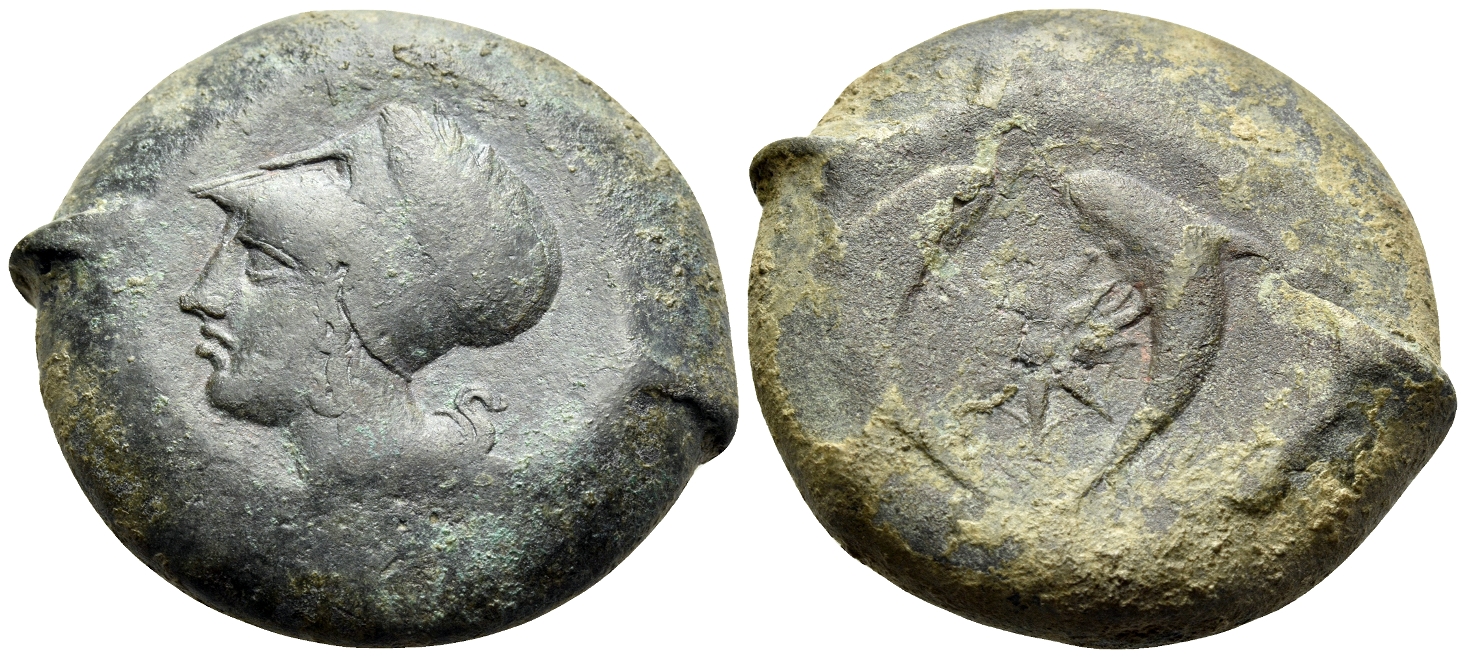Latest revision as of 13:27, 2 August 2023
344 BCE - 339 BCEΑΡΧΑΓΕΤΑΣ | ΣYMMAXIKON
Overstriking coin
Alaesa_1601_Felzman.jpg
[1]
Overstruck variety
Syracuse SO 2263.jpg
|
|
Sale(s)Sale(s) ᵖ:
|
Felzmann, 155, 1 March 2016, 10 = Felzmann, 171, 16 March 2021, 304
|
|
|
|
Description
| ObverseInscription or printing placed on the obverse.:
|
ΑΡΧΑΓΕΤΑΣ (Greek) Head of Apollo left, wearing laurel wreath. Border of dots.
|
ReverseInscription or printing placed on the reverse.:
|
ΣYMMAXIKON (Greek) Lighted torch between two grain ears. All within linear border.
|
Mint and issuing power
| MintIdentifies the place of manufacture or issue of a numismatic object.:
|
Alaesa
|
Ancient regionAncient region.
|
Sicily
|
Modern countryModern country: Italy
|
AuthorityIdentifies the issuing power. The authority can be "pretended" when the name or the portrait of X is on the coin but he/she was not the issuing power. It can also be "uncertain" when there is no mention of X on the coin but he/she was the issuing power according to the historical sources:
|
Campanian mercenaries
|
Chronology
| FromIdentifies the initial date in a range assigned in a numismatic context. 344 BCE toIdentifies the final date in a range assigned in a numismatic context.. 339 BCE
|
Classical 480-323 BC  periodTime period of the numismatic object. periodTime period of the numismatic object.
|
Physical description
MetalThe physical material (usually metal) from which an object is made.: Bronze 
|
WeightWeight of the numismatic object (in grams). in grams: 24.4424.44 g <br />24,440 mg <br />
|
DenominationTerm indicating the value of a numismatic object. Examples: tetradrachm, chalkous, denarius.: drachma 
|
|
|
|
|
References
Description
| ObverseInscription or printing placed on the obverse.:
|
ΣΥΡΑ (Greek) Head of Athena left, wearing Corinthian helmet decorated with ivy wreath
|
ReverseInscription or printing placed on the reverse.:
|
Two dolphins flanking stylized starfish
|
Mint and issuing power
Chronology
| FromIdentifies the initial date in a range assigned in a numismatic context. 400 BCE toIdentifies the final date in a range assigned in a numismatic context.. 367 BCE
|
Classical 480-323 BC  periodTime period of the numismatic object. periodTime period of the numismatic object.
|
Physical description
| DenominationTerm indicating the value of a numismatic object. Examples: tetradrachm, chalkous, denarius. ᵖ:
|
drachma 
|
|
|
References


